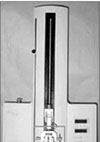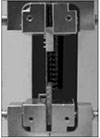1. Duke ES, Lindemuth J. Variability of clinical dentin substrates. Am J Dent. 1991. 4:241–246.
2. Yoshiyama M, Carvalho RM, Sano H, Pashley DH. Regional bond strengths of resin to human root dentin. J Dent. 1996. 24:435–442.
3. Nakajima M, Takada T, Tagami J, Hoseda H. A study on bonding to dentine in various teeth and sites. Jpn J Conserv Dent. 1991. 34:266–274.
4. Yoshiyama M, Matsuo T, Ebisu S, Pashley D. Regional bond strengths of self-etching/self-priming adhesive systems. J Dent. 1998. 26:609–616.

5. Yoshiyama M, Carvalho R, Sano H, Horner J, Brewer PD, Pashley DH. Interfacial morphology and strength of bonds made to superficial versus deep dentin. Am J Dent. 1995. 8:297–302.
6. Pashley DH. Dentin bonding : Overview of the substrate with respect to adhesive materials. J Esthet Dent. 1991. 3:46–50.

7. Tay FR, Pashley DL. Aggressiveness of contemporary self-etching systems. I: Depth of penetration beyond dentin smear layers. Dent Mater. 2001. 17:296–308.
8. Perdigão J, Lopes L, Lambrechts P, Van Meerbeek B, Vanherle G. Effects of a self-etching primer on enamel shear bond strengths and SEM morphology. Am J Dent. 1997. 10:141–146.
9. Marshall GW Jr, Marshall SJ, Kinney JH. The dentin substrate : structure and properties related to bonding. J Dent. 1997. 25:441–458.
10. Swift EJ, Perdiagao J, Heymann HO. Bonding to enamel and dentin : A brief history and state of the art. Quintessence Int. 1995. 26:95–110.
11. Kubo S, Finger WJ, Moller M, Podzun W. Principles and mechanism of bonding with dentin adhesive materials. J Esthet Dent. 1991. 3:62–69.
12. Sano H, Takatsu T, Ciucchi B. Nanoleakage : leakage within the hybrid layer. Oper Dent. 1995. 20:18–25.
13. Nakabayashi N, Kojima K, Masuhara E. The promotion of adhesion by the infiltration of monomers into tooth substrates. J Biomed Mater Res. 1982. 16:265–273.

14. Carvalho RM, Fernandes CA, Villanueva R.. Tensile strength of human dentin as a function of tubule orientation and density. J Adhes Dent. 2001. 3(4):309–314.
15. Pereira PNR, Okuda M, Sano H. Effect of intrinsic wetness and regional difference on dentin bond strength. Dent Mater. 1999. 15:46–53.

16. Bouillaguet S, Gysi P, Wataha JC. Bond strength of composite to dentin using conventional, one-step, and self-etching adhesive systems. J Dent. 2001. 29:55–61.

17. Burrow MF, Sano H, Nakajima M, Harada N, Tagami J. Bond strength to crown and root dentin. Am J Dent. 1996. 9:223–229.
18. Pashley DH, Carvalho RM. Dentine permeability and dentine adhesion. J Dent. 1997. 25:355–372.

19. Pashley DH, Ciucchi B, Sano H, Carvalho RM, Russel CM. Bond strength vs. dentin structure: A modeling approach. Arch Oral Biol. 1995. 40:1109–1118.
20. Vargas MA. Interfacial micromorphology and shear bond strength of single-bottle primer/adhesives. Dent Mater. 1997. 13:316–324.

21. Van Meerbeek B, Yoshida Y, Snauwaert J. Hybridization effectiveness of a two-step versus three step smear layer removing adhesive materials examined correlatively by TEM and AFM. J Dent Res. 1999. 1:7–23.
22. Phrukkanon S, Burrow MF, Tyas MJ. The effect of dentine location and tubule orientation on the bond strengths between resin and dentine. J Dent. 1999. 27:265–274.

23. Shimada Y, Senawongse P. Bond strength of two adhesive systems to primary and permanent enamel. Oper Dent. 2002. 27:403–409.
24. McDonough WG, Antonucci KM, Shimada Y. A microshear test to measure bond strengths of dentin-polymer interfaces. Biomaterials. 2002. 23(17):3603–3608.

25. Sidhu SK, Watson TF. Interfacial characteristics of resin-modified glass-ionomer cements. J Dent Res. 1998. 77:1749–1759.

26. Burgess JO. Dental materials for the restoration of root surface caries. Am J Dent. 1995. 8:342–351.
27. Øilo G. Bond strength testing-what does it mean? Int Dent J. 1993. 43:492–498.
28. Cardoso PE, Braga RR, Carrilho MR. Evaluation of micro-tensile, shear and tensile tests determining the bond strength of three adhesive systems. Dent Mater. 1998. 14:394–298.

29. Sano H, Shono T, Sonoda H. Relationship between surface area for adhesion and tensile bond strength -evaluation of a microtensile bond test. Dent Mater. 1994. 10:236–240.

30. Shono Y, Terashita M. Regional measurement of resin-dentin bond strength a trial of new version of micro-tensile test method. Proceedings of the Adhesive dent. 1999. 74–84.
31. Dunne SM, Goolnik JS, Millar BJ, Seddon RP. Caries inhibition by a resin-modified and conventional glass ionomer cement, in vitro. J Dent. 1996. 24:91–94.

32. Giannini M, Carvalho RM, Martins LR. The influence of tubule density and area of solid dentin on bond strength of two adhesive systems to dentin. J Adhes Dent. 2001. 3(4):315–324.
33. Friedl KH, Powers JM, Hiller KA. Influence of selected variables on adhesion testing. Oper Dent. 1995. 20:74–80.
34. Furseth R. The structure of peripheral root detine in young dentine. Scand J Dent Res. 1974. 82:557–561.
35. Fogel HM, Marshall FJ, Pashley DH. Effect of distance from pulp and thickness on hydraulic conductance of human radicular dentin. J Dent Res. 1988. 67:1381–1385.

36. Ferrari M, Cagidiaco CM, Mason PN. Morphologic aspects of the resin-dentin interdiffusion zone with five different adhesive systems tested in vivo. J Prosthet Dent. 1994. 71:404–408.

37. Inoue S, Vargas MA, Abe Y, Yoshida Y. Microtensile bond strength of eleven contemporary adhesives to dentin. J Adhes Dent. 2001. 3(3):237–245.
38. Mount GJ. Glass-ionomer cements : past, present, and future. Oper Dent. 1994. 19:82–90.
39. Pereira PNR, Yamada T, Tei R, Tagami J. Bond strength and interfacial micromorphology of an improved resin-modified glass ionomer cement. Am J Dent. 1997. 10:128–132.




 PDF
PDF ePub
ePub Citation
Citation Print
Print














 XML Download
XML Download